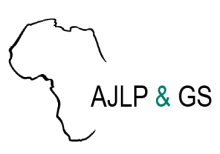Land Library
Welcome to the Land Portal Library. Explore our vast collection of open-access resources (over 74,000) including reports, journal articles, research papers, peer-reviewed publications, legal documents, videos and much more.
/ library resources
Showing items 1 through 9 of 217.Context and backgroundThe intensive use of land is regarded as the major source of agricultural growth in many developing nations, even though this intensive usage has been seen as one of the most substantial human impacts on the global environment.
Context and backgroundUnsustainable land management practices result in land degradation that threatens the environment and stifles livelihoods.
Goal and Objectives:The overall objective of this paper is to examine the perspectives of pedestrians on the walking environmennt in a stuation of increased transport and to recommend for policy and planning interventions through which the walking environment in cities of developing countries can
In Africa, particularly in Senegal, the issue of gender in land governance remains an equation when it comes to access to land.
Contexte et contexte La variabilité climatique est une réalité au Burkina Faso, et les catastrophes naturelles en sont les effets visibles. Cela pose d’énormes défis tant aux gouvernements qu’aux populations locales.
Context and objectives:Climate extremes associated with wet and dry conditions are one of the main causal elements of the disasters that adversely impact Uganda`s agriculturally based economy.
Context and background: Cities in developing world are experiencing rapid urbanization characterized by rapid population growth. Tanzania like many other most of urban areas face poor public transport which force city dwellers to use alternative transport including walking.
There is an urgent need for countries to transition their national food and land-use systems toward food and nutritional security, climate stability, and environmental integrity.
The purpose of this brief is to identify and summarize the critical bottlenecks related to the policy and regulatory environment, infrastructure, and public services that constrain the expansion and diversification of Ethiopia’s intra-regional trade and value addition.


